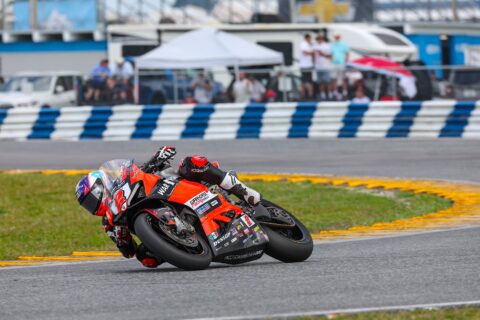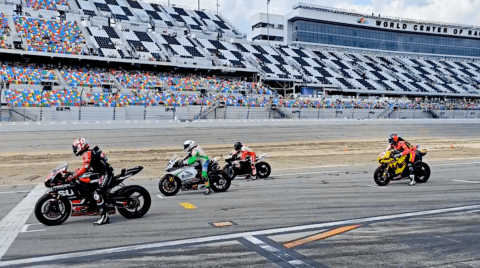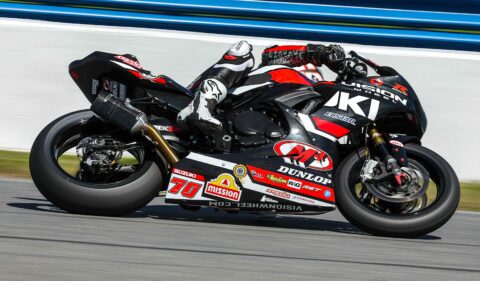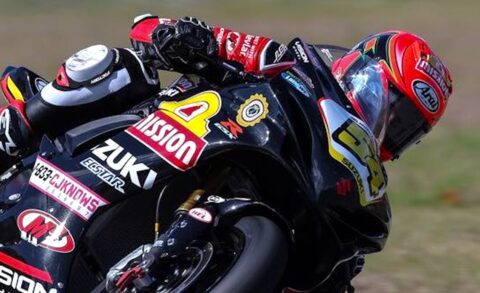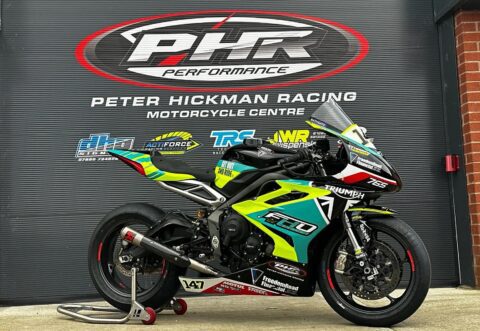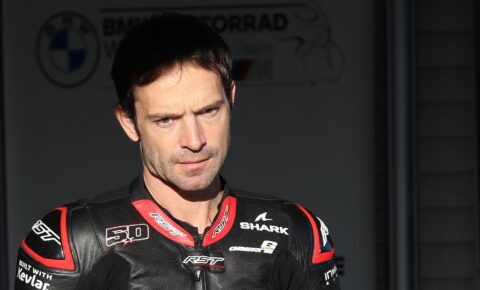I first saw Ducati’s SP earlier this year and have been waiting to get my hands on one ever since. Luckily, Ducati loaned me SP number 29 for the week, which coincided with a heatwave in the UK. Dry, warm and sticky roads plus a Ducati SP – heaven.
Ducati has made ‘special’ iterations of its superbikes since the first SP version of the iconic 851. I was one of a select group to ride their stunning, multi-winged Superleggera last year; with 221bhp and just 159kg it was a brilliant machine to ride around Mugello. But, it is also, for most of us, simply a poster bike: a dream designed to be as extreme as possible.
The Euro-5 SP features some of the tech of the Superleggera, but with a more useable 1103cc V4 instead of the rev-happy 999cc race-derived Superleggera power unit. And despite a limited production run, prices start at a more affordable £32,295, yes I did say affordable - sorry.
There are machines like BMW’s M1000RR on the market that can match the SP in terms of performance and price, but few that can match its intrinsic appeal and desirability. I don’t know if it’s because of the history of Ducati and its shimmering Italian glamour – I can’t put my finger on it – but the Panigale SP overloads the senses, builds excitement and makes you feel like a teenager on a first date.
Those carbon wheels, that brushed aluminium fuel tank borrowed from the R model, Stylema R brake calipers from the Superleggera, the MCS and remote adjustable brake lever… I love them all. Check out, too, the multi-adjustable billet aluminium footpegs. It’s strange to feel an instant emotional attachment to an object, especially one that I’ve only borrowed, but I do with the SP. That is what makes this Ducati so special.
Power
The SP has been designed primarily for the track, but unlike the R and Superleggara versions, the SP is targeted at ‘average’ riders, not retired racers and the like, and unlike the aforementioned V4s, is Euro-5 compliant. Euro restrictions means that despite having a dry clutch, it doesn’t rattle like the bikes of old – 851 SP anyone! – and at low revs the bark from the V4 is even a little subdued.
Power output is the same as the lower spec and much cheaper Panigale V4 and V4S, which were tweaked for Euro-5 this year. Aside from that new dry clutch, the 1103cc Desmosedici Stradale 90-degree V4 remains unchanged.
Ok, the SP engine hasn’t been injected with a full dose of Ducati Corsa ferocity, but it’s still impressive – 157.5kW/211bhp @ 13,000rpm, with peak torque at 124Nm/91.5lbft @ 9250rpm. I’ve ridden the V4 and V4S extensively on track and never headed for home afterwards wishing I’d had more power, even at theatres of speed like Mugello or Bahrain’s International Circuit where they launched the 2020 model.
In fact, on the road, its performance is almost too much. When you throw a leg over the SP, look down at its carbon wings, watch the revs dramatically rise and fall with every blip of its ride-by-wire throttle, it’s hard not to feel a little intimidated. But Ducati has thankfully thought of that.
There are four simple riding modes: Sport and Street for the road and Race A and Race B for the track. Interestingly, and partly key to the Ducati’s surprisingly ease-of-use on the road, is a reduction in torque in the lower gears in all modes apart from Race A. It’s only when you flick into Race A that you get the full flavour.
Even in Street mode, the SP feels quick. You think it’s accelerating hard then it just keeps going and going and revs on to a staggering 14,500rpm. It feels like there is no mechanical friction, the revs (and power) rising seemingly without limit or resistance.
When you first ride the SP you instinctively change gear early because you’re accelerating so fast and assume your close to the redline, especially if you grew up riding Ducati twin – but you’re not. Keep in the gear longer, let it rev to the peak power at 13,000rpm… and it’s breath-taking.
Tap the quickshifter and, once you’ve processed the first few gears and are into full power in fourth gear, you’re at warp speed and going directly to jail.
To ride the SP at full throttle you need either to be on track or live on the Isle of Man. At most UK tracks, I’d probably still opt for Race B mode or even Sport. The reduction in torque in the lower gears doesn’t make the bike slower, it just gives the rider aids an easier time. Reducing power and torque in lower gears is a trick most race teams have been using for years.
In full power with no rider aids the SP is simply a race bike with mirrors and even those lovely carbon wings can’t control the endless wheelies, especially at low speeds – and when I say low speeds, I mean below 100mph/160kph.
But, like the V4 and S, the SP has a split personality, which makes it relatively calm in the Street and Sport modes (which also change the multiple EVO 3 rider aids, more later). You can pop to the shops, no problem, take it easy on a sunny afternoon and happily cruise down the motorway, but if you poke it with a stick and flick it into either race mode, it will bite back.
Handling
The big talking point is the lightweight five-spoke carbon wheels, which save 1.4kg over the V4S and 3.4kg over the base V4. Now, 1.4kg might not seem much, but this is a huge saving in unsprung weight. The Ducati Panigale V4 has always been a light bike, easy to turn and handle, but now is even more so. The difference isn’t especially noticeable at road legal speeds, but at race speed during fast direction changes the SP flicks effortlessly. A few times I gave the SP too much input effort and turned too tight, hitting the apex too early.
Like the V4S, the SP is equipped with electronically controlled (EC) Öhlins NIX 30 forks and TTX36 rear shock, and even the steering damper is a Öhlins Smart EC 2.0 system. This system is mighty impressive and allows you to electronically personalise its settings, but I found the road settings to be almost faultless. Bumps, fast corners, changes in surfaces, and hard acceleration… the Öhlins took it all. It’s worth mentioning the Pirelli SuperCorsa SP tyres complement the bike perfectly. In admittedly perfect British summer weather they provided endless grip. On some very bumpy back roads I would have liked a little more plushness, especially at low speeds, but as the pace picked up and the suspension worked harder, they matched the SP’s intentions perfectly.
Historically, some older EC suspension systems lacked feel, but this certainly isn’t the case with the SP. I was hitting familiar sections of road at speed and had great feedback. I could keep leaning and carrying ever-more corner speed, knowing I had the very latest rider aids on hand to keep me safe. In fact, I can’t remember the last time I rode on the road and had so much knee-down fun. The SP encourages you to lean further, release the brakes and carry more speed.
Rider aids
We’ve only briefly mentioned the electronic rider aids, which aside from being the very latest EVO 3 system, are easy to access via a 5-inch TFT dash and simple to adjust. The electronic toys at your fingertips are EVO cornering ABS and traction, slide, wheelie, engine brake, and launch control. Not forgetting the standard up and down quickshifter and Öhlins electronic suspension.
The pre-set riding modes dictate the amount of computer intervention and, to be honest, on dry roads with grippy Pirelli rubber, the wheelie control was the only rider aid working overtime (despite the carbon wings doing their best to reduced wheelies).
But on track or in less favourable conditions these rider aids are the Ducati’s ace card, especially for less experienced hands. In the wet, especially on the road, cornering ABS is godsend. And even if you intend to ride the SP on the track only you will quickly discover the benefits of one of the most effective suite of electronic support on the market. Imagine the final session of the day when you’re feeling tired and the rear tyre’s going off: just flick into Race B or Street mode and the SP will run with more intervention and reduced torque in the lower gears but you’ll still be having fun – and be putting in some fast lap times.
Braking
The SP shares the impressive braking set-up as the Superleggera, which I rode last year at Mugello. The Brembo Stylema R front brakes are incredible, race-spec brakes, which are faultless on track. There’s also a remote span adjuster that is very trick, easy to use and comes in useful surprisingly often. Not all good.
The brushed-aluminium fuel tank feels and looks lovely but, at only 16 litres capacity, the SP needs fuel every hour or every 90miles. On track this reduces dramatically.
Ignoring the fuel range for a moment, Ducati has done everything imaginable to reduce the heat from the back cylinder, yet still your inner legs are cooked. Heavy traffic creates cooked bits.
The dry clutch is designed for racing and heavier than standard, and it makes natural harder to find.I’ve never experienced this problem with the standard Panigale. Finally, the price… and SP is not cheap, and getting hold of a limited edition is going to be hard work.
VERDICT
Ducati claims a non-professional rider will lap faster on the SP version than on the dedicated homologation special R version, as it’s easier to ride. I agree with that; the SP is forgiving, thanks to lighter wheels, a less race-focused race engine, and impressive electronic rider aids. The SP is simply an easier way to ride fast while still looking factory good.
Honestly, for the road, you don’t need remote span-adjustable levers, carbon wheels or a limited edition ‘Winter Test’ livery. Yet I still want a SP. I, for one, don’t care about the tank range, and I’ll not bother with neutral at the lights, and if my testicles set on fire – who cares. Just look at it – the Ducati not my testicles.
It’s breathtakingly fast – mind-blowing, in fact – and the handling is unbelievable. I’ll stick my neck out and say that it’s possibly the finest handling road bike on the market at the moment, and certainly in the top three.
| Capacity | 1103cc |
| Type | 90- degree V4, 4v per cylinder |
| Bore & stroke | 81x 53.5mm |
| Compression ratio | 14.0.:1 |
| Water cooled | |
| Fuelling | RBW two injectors per cylinder |
| Transmission | Six-speed |
| Clutch | Dry hydraulic slipper |
| Final drive | Chain |
| Performance | |
| Power | 157.5kW/211bhp @ 13,000rpm (claimed) |
| Torque | 124Nm/91.5lbft @ 9250rpm (claimed) |
| Top speed | 186mph (estimated) |
| Fuel consumption | 7.6l/100km 37.6mpg claimed 5.7/100km 41mpg tested |
| Electronics | |
| Type | Bosch |
| Rider aides | Rider modes, power modes, cornering ABS EVO. Ducati Traction Control EVO3, Ducati Wheelie Control EVO, Ducati Slide Control, Engine Brake Control, Ducati Power Launch, Ducati Quick Shift |
| CHASSIS | |
| Frame material | Aluminium |
| Frame | Front Frame |
| Rake | 24.5 degrees |
| Trail | 100mm |
| Wheelbase | 1469mm |
| suspension | |
| Type | Öhlins Smart EC2.0 |
| Front: | Öhlins NIX30 43MM fully adjustable electronic. 120mm travel |
| Rear: | Öhlins TTX36 fully adjustbale electronic 130 mm travel |
| wheels & brakes | |
| Wheels | Carbon |
| Front: | 17 x 3.5 Rear: 17 x 6 |
| Tyres | Pirelli Diablo Supercorsa SP |
| Front: | 120/70 17 |
| Rear: | 200/60 17 |
| Brakes | Brembo Stylema R with Bosch Cornering ABS EVO |
| Front: | 2 x 330mm discs, four piston radial mounted Brembo Monobloc Stylema R caliper with remote adjuster |
| Rear: | Single 245mm disc, two piston Brembo caliper |
| Dimensions | |
| Weight | 173kg (dry) 194 (kerb) |
| Seat height | 835mm |
| Width | 805mm |
| Height | 1132mm |
| Length | 2100mm |
| Ground clearance | 125mm |
| Fuel capacity | 16L |
| servicing & warranty | |
| Minor: | 7500miles 12000km |
| Major: | 24,000km Desmo service |
| Warranty | Two years |
| business end | |
| Price | |
| Colour options. | Black |
| Contact | www.Ducati.com |


